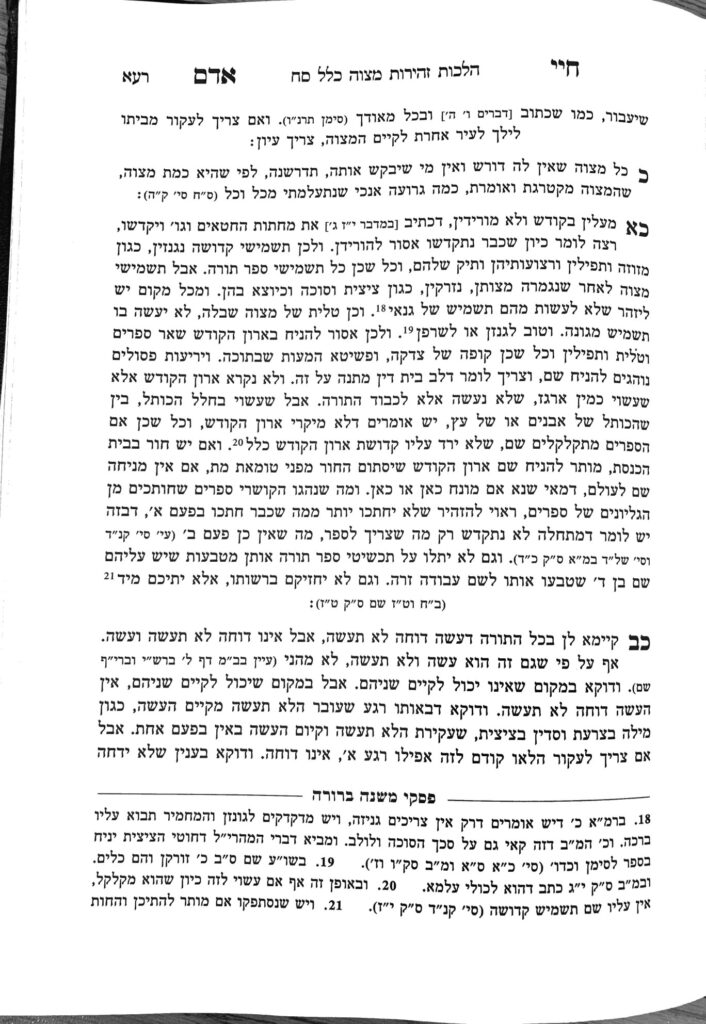We are continuing in siman 21, discussing the halachos of geniza and tashmishei kedusha. Today, we will discuss printed seforim and quoted pesukim.
When Moshe received the Torah, Torah Shebaal Peh was oral, so the question of geniza was fairly irrelevant. There was a concept of a megillas sesorim, that if a talmid learned from a rebbe they could write notes down, and they could only review them privately, not publicly. Thus, for the most part, written material of Torah Shebaal Peh was fairly uncommon. (The concept of a megillas sesorim is noted by Rashi, who says that the phrase, im ta’azveini yom yomayim a’azveka is brought in a megillas sesorim.)
Chazal found a source that allowed them to write down torah shebaal peh, because they were concerned it would be lost (ais la’asos Lashem). Klal Yisroel were no longer on the level at which they could memorize their learning, so it was necessary to write it down. The question then arises whether those seforim have kedusha, as one may have argued that since it was not meant to be written, it does not have kedusha. However, we pasken that it does receive kedushas sefer, just as the seforim of torah shebichsav. Thus, a Gemara, or any handwritten copy of any part of Torah Shebaal Peh, would have the same kedusha as Torah Shebichsav.
The next question is whether a printed sefer, in which there was no author handwriting the words and having kavanah for kedushas hasefer, has any form of kedusha. The printing press was introduced before the generation of the nosei keilim of the Shulchan Aruch, so both the Taz and Magen Avraham discuss this question. They both write that printed seforim (sifrei defus) have kedushas sefer.
It is important to note that once the sefer has kedusha, the gilyonos (margins, see shiur 1456) and binding have kedusha as well and requires geniza. For example, if one binds a sefer, and drills holes in the spine to rebind it, the little pieces which come out from the drilling require geniza. Spine labels to identify the correct shelf or placing of a sefer do not require geniza.
Summary
A sefer of Torah Shebaal Peh has kedusha.
Printed seforim have kedusha as well, and require geniza in their entirety. This includes parts of the margins which fall off, the spine, or little pieces of the sefer which fall off when rebinding a sefer.



